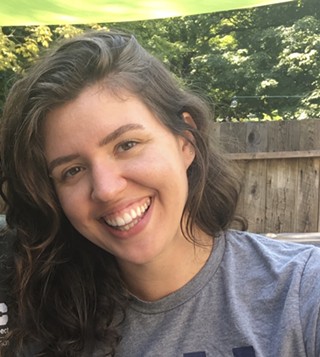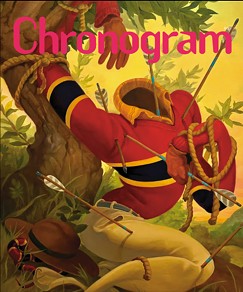Going full-time as a small artisan is seen as a romantic and fulfilling career choice, but the actual nuts and bolts of making a living as a creative can seem downright unattainable. For Brenna Chase, founder of Willow Deep Studio, building a successful business has required more than just skill and passion for her artforms. Her journey to full-time artisan has been defined by a spirit of openness and constant iteration.
Scaling to Full-Time Isn’t Like Flipping a Switch
For many artisans, the transition to a full-time business isn't straightforward or immediate. After almost a decade in the music industry, Chase went back to school to earn her certification in historic preservation and restoration. After working for two separate studios to learn the artforms of stained glass and gold leaf, she eventually struck out on her own, founding Willow Deep Studio in Rosendale in 2018. “In starting my business, I took everything that worked for the music business and I took everything that worked from the two studios that I worked at—and also what didn't work,” she says.
After opening her studio, Chase gradually increased her stained glass and gold leaf work over the course of several years. Even as her studio began to gain traction, she maintained multiple income streams to support herself, a common scenario for many artisans starting out. She pulled on skills from her music industry career to find consulting work and worked part-time for another decorative arts company. “I was a gig worker for many years while I was starting my studio,” she recalls.
She acknowledges, however, that successfully making the leap to full-time wasn’t some magic solution for financial stability. “As soon as I was able to put all of my time into it, I made so much more money,” she says. “I cannot properly run my business with the 115 percent that I give and also have another job at this point, but it is also always on the border of, ‘Is this enough to support myself?’ And I know so many people are in my boat.”
Offer a Variety of Products to See What Works
For any commission-based creative, Chase emphasizes the importance of diversifying sales opportunities, especially in the early stages of the business. “I definitely took some good advice from one of the studios I worked at—when you’re starting out, you have to say yes to everything and just figure it out,” she says. “It’s scary, but it’s the only way to go from nothing to something.”
To test out what her potential customers wanted throughout the year, she experimented with a wide variety of offerings at different price points. She opened up sales for residential and commercial commissions at every scale—from custom stained glass pieces and restoration to gold leaf window displays and numbers on historic homes—as well as smaller stained glass works, custom gilded mirrors, mural work, and even workshops where she teaches beginner and intermediate students how to create stained glass pieces.
She discovered that while some channels may become dormant for months, others will flourish, creating a more resilient cash flow throughout the year. “It ended up being that all of the channels responded throughout each year and each season,” she says. "I talk to a lot of business owners who say it's impossible to predict anymore, even with what used to be regular retail seasons. This model is tiring, but it works because I never have to depend on a certain cycle or what’s popular."
Don't Be Afraid to Ask for Advice
Asking other artisans and small business owners for advice has been another vital part of Willow Deep Studio’s growth. Though it can be uncomfortable, reaching out for guidance is a muscle that Chase recommends other creatives develop as well. “Asking questions is the only way I've learned anything,” she says.
Even though there are only a few stained glass studios in the region, Chase has prioritized a spirit of cooperation above competition—reaching out for guidance from established professionals in her field when needed and sharing her experiences and challenges openly with other small business owners in different industries.
“I've been really transparent and honest with saying, ‘I don't know what I'm doing with this’ or ‘Does this seem right to you?’” she says. “Other people have been incredibly helpful, even sometimes just reassuring me that they're going through this too as a business owner or that a price seems fair to them.”
Carve Out Time to Create and Find Community
Supporting oneself as a full-time artisan is a success in itself, but one that often comes with sacrifices in different areas. Like many creatives who get paid to pursue their artform, carving out time for noncommissioned work is a challenge for Chase. “I find it really difficult to have any time to make art that I just want to make,” she says.
A few years ago, Chase joined Hinterland, a collective of female-identifying artists, makers, designers, and growers founded by designer Jennifer Salvemini. Being part of a community of like-minded creators provides a sense of belonging and mutual support, which is invaluable for sustaining long-term passion and innovation in Chase’s craft.
“The collaborative aspect of Hinterland is really important to me because with my work, there's only so much collaboration I can do,” she says. “I love this freedom and just opening these new doors to things I wouldn't have even thought of working with other designers and other artisans. It's a way to expand my horizons in the ways of how I use a different part of my brain than my paid work calls for.”



















